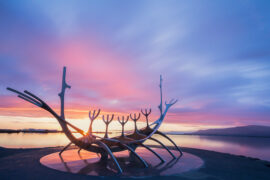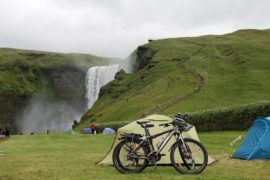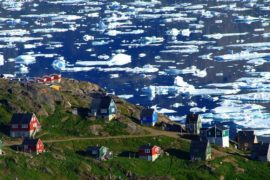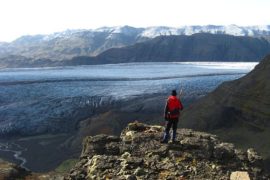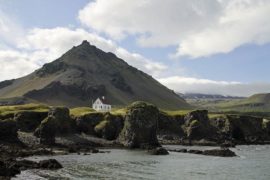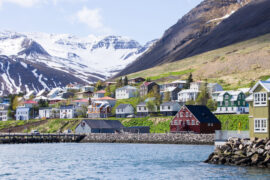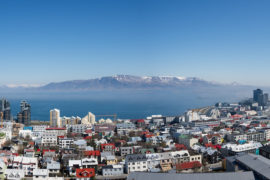Iceland may not be the first place that springs to mind when you think about scuba diving. But, dive sites don’t have to be all about warm waters and tropical fish.
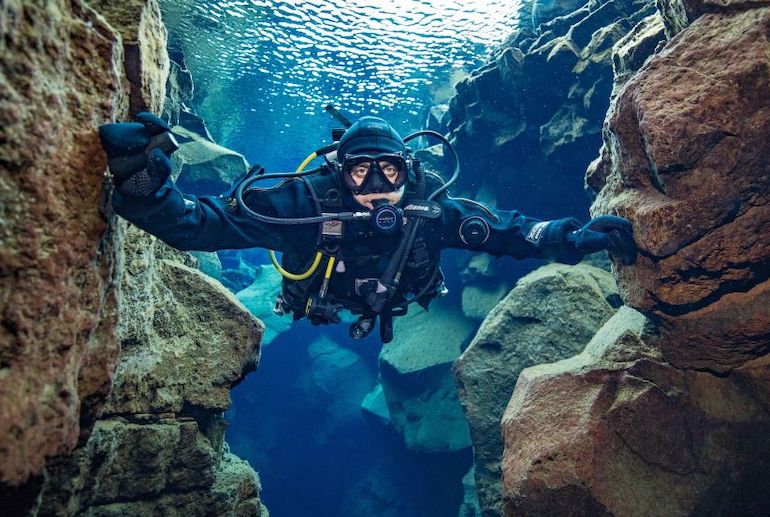
Iceland has some of the clearest glacial waters in the world and a variety of amazing underwater rock formations and marine life, that other better-known diving areas just can’t compete with.
Where else can you dive between the tectonic plates of the Eurasian and American continents? Or explore the underwater thrills of the Devil’s Jacuzzi, a bubbling maelstrom of thermal springs?
Quick take: our top 3 dive tours
Recent advances in technology have meant that dry suits are now much more effective at providing protection from lower temperatures.
And this means that snorkelling and diving in the stunning glacial waters of Iceland is now more accessible.
Snorkelling is great for the casual cold water swimmer – check out our guide to the best snorkeling sites in Iceland – but to really see the underwater world at its best, you need to don your scuba tank and dive into the depths.
Why go diving in Iceland?
Up until fairly recently diving in Iceland was not possible due to the low temperatures of the water, so its many underwater treasures remained unexplored.
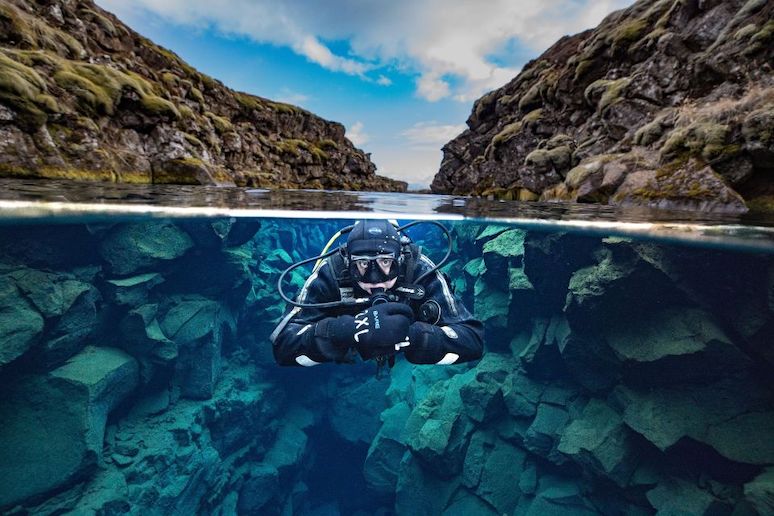
Now that dry suit technology is more advanced, people are beginning to explore Iceland’s undiscovered underwater world. Iceland is home to both freshwater and sea water dive sites, with excellent visibility.
Iceland’s Silfra fissure is a unique diving spot, where divers can touch both the North American and Eurasian tectonic plates at the same time.
Located in the beautiful Unesco Heritage Thingvellir National Park, the Silfra fissure has some of clearest water in the world with visibility of more than 100 metres.
In Lake Kleifarvatn, you can explore lava caves and swim up to the bubbling Devil’s Jacuzzi, a series of underwater hot springs and volcanic vents.
And Iceland’s scuba scene is well-regulated with professional and experienced guides, so you can be sure that all safety checks and equipment are enforced.
What’s the marine life like?
Ok, so Iceland doesn’t have vast coral reefs and tropical fish, but there’s plenty of other marine life and geological sights to look out for.
In Lake Kleifarvatn you may see arctic char and brown trout, but it’s the underwater landscapes that are really intriguing. You’ll see colourful sulphide deposits and steaming volcanic vents, where hydrothermal gases bubble up from the lake floor.
In the Silfra fissure, you’ll see ancient lava formations and can touch two continental shelves at the same time!
Iceland’s most popular ocean dive is at Garður, where you can see a variety of colourful marine algae, giant kelp forests and cold-water corals. You may also see wolffish, scorpionfish, monkfish and flatfish that hide in the sand.
Who can go diving in Iceland?
You must be over 18 to go diving in Iceland, and you’ll need a PADI Open Water diving certificate or the equivalent.
You’ll also need dry suit diving certification and a logged dry suit dive within the previous two years.
Alternatively, some companies will accept written proof from a diving instructor of a minimum of 10 logged dry suit dives within the previous two years.
A good level of physical fitness is required and you’ll need to be in good health: those with back problems or heart conditions are not allowed to dive, nor is anyone who is pregnant.
Over 60s may be asked for a doctor’s certificate before they are allowed to dive.
The 9 best diving tours in Iceland
There’s a variety of places in Iceland where you can dive, from the Silfra fissure to the open sea. So, we’ve picked some of our favourite diving tours.
Scuba dive in the Silfra fissure
The ultimate diving experience in Iceland is to swim between the American and Eurasian tectonic plates in the Thingvellir National Park.
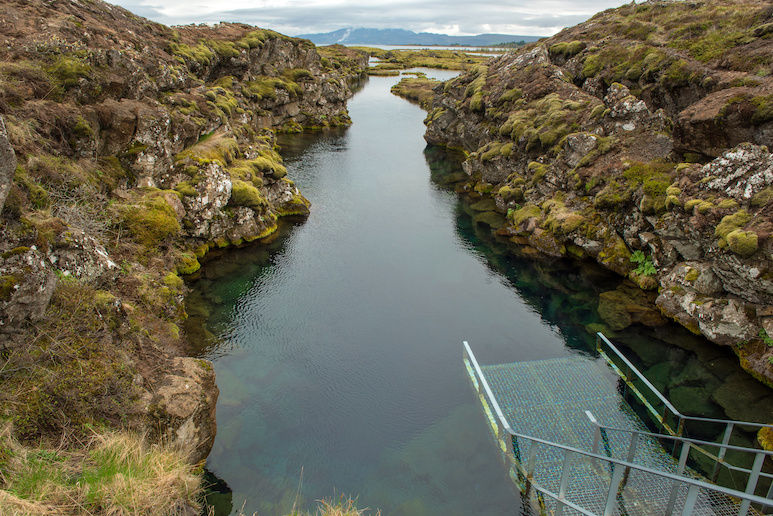
This tour includes the dive, all equipment, an experienced guide, entrance fee to the dive site and return travel from Reykjavik.
From US$260 per person.
See the thermal vents in Lake Kleifarvatn
Lake Kleifarvatn is a unique dive site with thermal vents that gush out hot water from a large crater beneath the water.
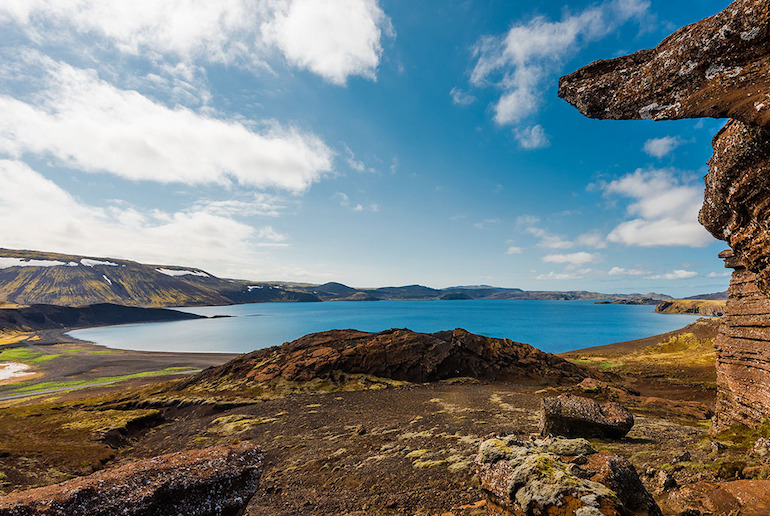
This fun tour takes you deep into the lake to see the Devil’s Jacuzzi, a maelstrom of sulphur gas bubbles that explode from the bottom of the lake. You’ll also get snacks and a hot drink, plus photos of your dive.
From US$300 per person.
Explore the Bjarnagjá fissure
The Bjarnagjá fissure is an 18-metre deep lava ravine on the Reykjanes Peninsula. It’s one of the few places in Iceland where you can swim in a mixture of sea and freshwater, as the rift is close to the shore.
Here, you can dive near an old crab hatchery and look out for shipwrecks. This tour includes a dive of about 40 minutes, plus all the gear and an experienced guide.
From US$416 per person.
Freedive in the Silfra fissure
You don’t need a PADI course to freedive, just a good level of fitness. This tour is suitable for experienced freedivers and beginners – all you need is to be able to swim well.
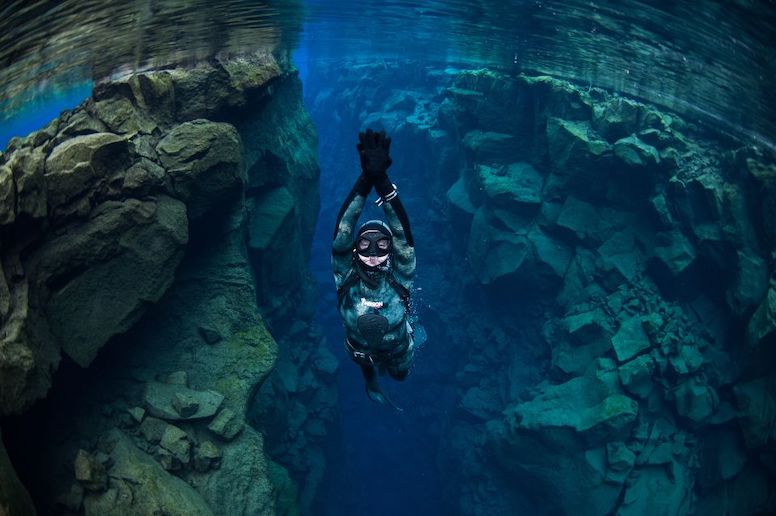
You can swim and dive between the tectonic plates with an experienced guide. All the gear is provided, and you even get a hot cocoa afterwards to warm up!
From US$210 per person.
Dive in the open ocean at Garður
Explore the kelp forests and colourful algae that grow in the sea at Garður. This shore dive includes an experienced open-water guide, all the kit you need, plus cocoa and cookies afterwards.
From US$416 per person.
Go whale-watching and scuba diving
Tick off two bucket-list adventures in one day! This awesome day out starts with a whale-watching trip from Reykjavik in the morning, then a scuba dive through the Silfra fissure in the afternoon.
For more on whale-watching tours in Iceland, see our ultimate guide.
From US$352 per person.
Explore the Silfra fissure and Thingvellir National Park
This scuba tour of the Silfra fissure includes the dive, guide and all gear, but not travel from Reykjavik, so you’ll need your own transport. For more on car rental in Iceland, read our ultimate guide.
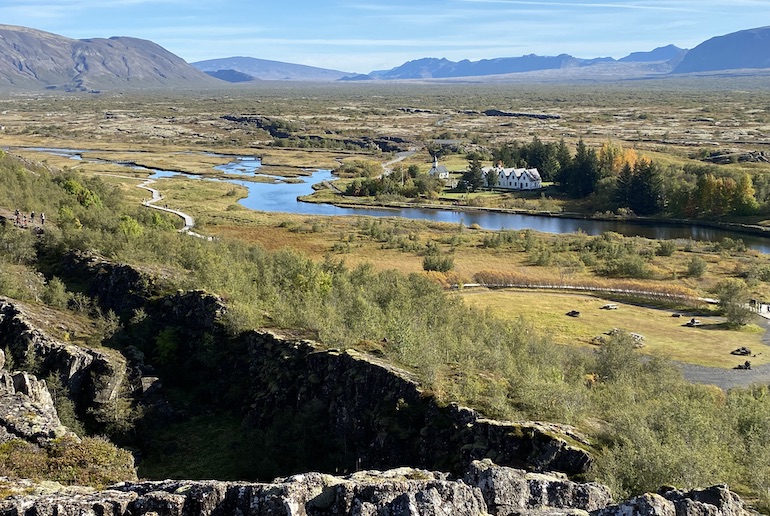
The upside of this is that you’ll have time to explore the amazing UNESCO Heritage Thingvellir National Park, site of the world’s first parliament, after your dive.
From US$270 per person.
Have a cold dive and a hot spa
What could be better after a cold water dive than warming up in the hot thermal waters of a spa?
This tour includes a dive at Silfra followed by a relaxing spa session at the Laugarvatn Fontana Geothermal Baths, where you can wallow in the hot waters, with lovely lake views.
From US$291 per person.
Take a multi-day diving tour
And if you can’t decide which dive to do, you can choose a multi-day diving tour that includes several of Iceland’s dive sites – plus some sight-seeing too.
The three-day diving tour, for example, includes dives at Kleifervatn and Silfra, plus two ocean dives of your choice and a dive at Davidsgja or a Golden Circle tour.
Prices vary depending on the length of the tour.
FAQ
What can you see when scuba diving in Iceland?
The main appeal of scuba diving in Iceland is the crystal clear water with some of the best visibility of any dive site in the world.
Whilst you may not see colourful coral reefs and tropical fish, the other-worldly rock formations, lava caves and kelp forests make Iceland a fascinating place to scuba dive.
What do you need to go scuba diving in Iceland?
Diving in Iceland requires a dry suit diving certificate, plus a PADI Open Water diving certificate.
If you are not dry suit certified, you can do a dry suit certification course plus Silfra dive in Iceland.
And if you don’t have your PADI certification, you can do a full PADI Open Water course in Iceland too.
How do I dive in Iceland without a diving certificate?
The only way you can dive in Iceland without a diving certificate is to go freediving, though you’ll still need to go with a certified guide.
Unless you’re an experienced free-diver, you won’t be able to go as deep as the scuba drivers, but this may be an option for those who want to experience the Silfra fissure, but don’t have PADI certification.
When is the best time to go diving in Iceland?
You can dive year-round at Silfra, but the best time to go is from April to October, when temperatures are warmer.
In June, you can do a Midnight sun dive, where you go diving at midnight beneath a dusky sky.
Some dives sites, such as Lake Kleifarvatn are not accessible in winter when the surface of the lake freezes over.
And open-ocean sites such as Garður can only be tackled in calm conditions. In summer, there is a lower chance of a sea dive being cancelled due to poor weather.
See also:
5 of the very hottest volcano tours in Iceland
6 of the most epic helicopter tours in Iceland
5 of the best snowmobile tours in Iceland

